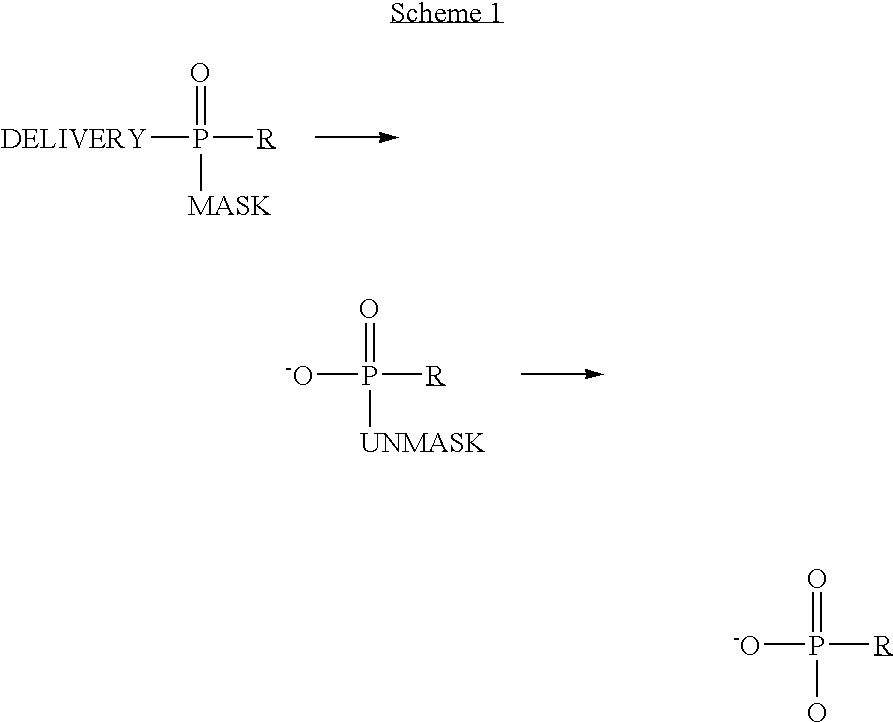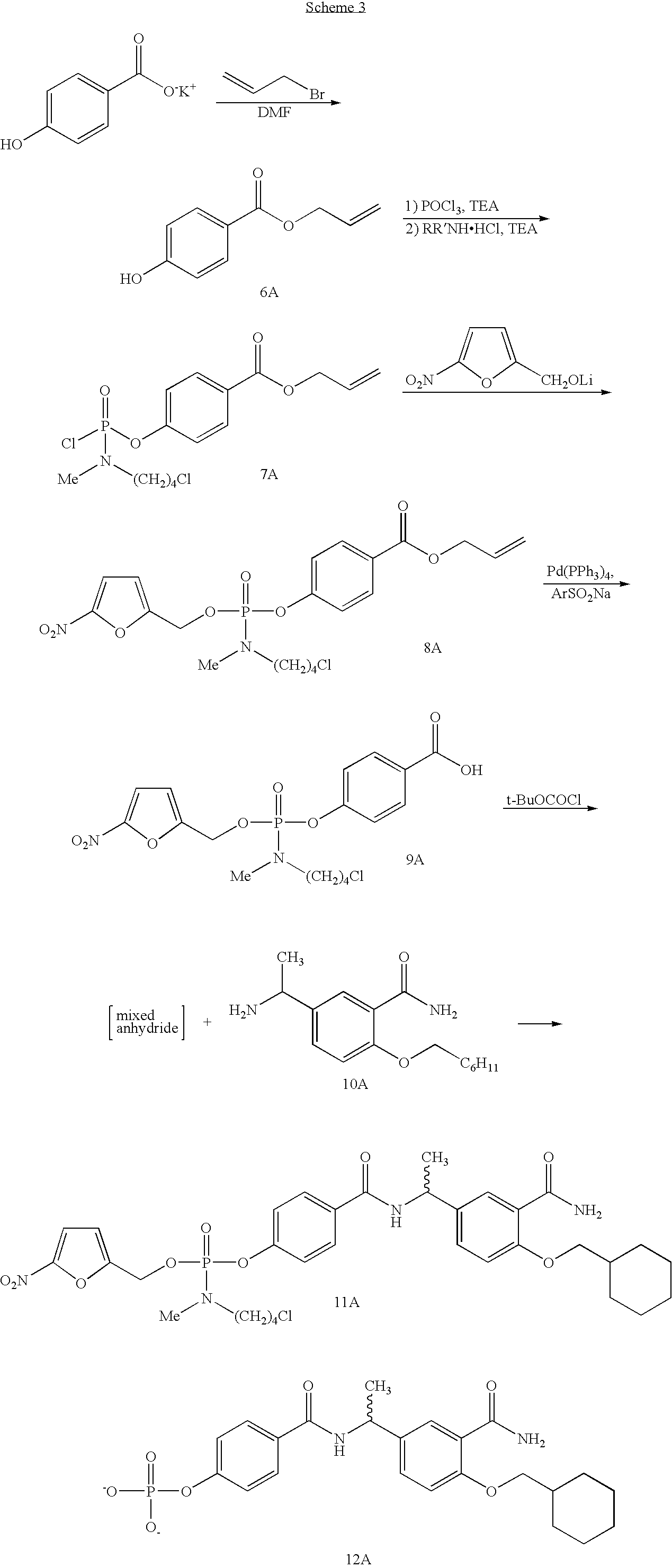Phosphoramidates and methods therefor
a phosphate substitute and phosphoramidate technology, applied in the direction of phosphorous compound active ingredients, drug compositions, peptide/protein ingredients, etc., can solve the problems of inefficient intracellular activation process, significant loss of binding affinity, and many nucleosides with therapeutic promise that cannot be converted to the corresponding nucleotide by existing cellular pathways, so as to achieve more efficient intracellular delivery
- Summary
- Abstract
- Description
- Claims
- Application Information
AI Technical Summary
Benefits of technology
Problems solved by technology
Method used
Image
Examples
experimental procedures and examples
[0062]
5-Fluoro-2′-deoxyuridyl 5-nitrofurfuryl N-methyl-N-(4-chlorobutyl)phosphoramidate (3)
[0063]Phosphorus trichloride (2M in CH2Cl2; 0.81 mL; 1.63 mmol) was cooled to −78° C. under argon. 5-Nitrofurfuryl alcohol (233 mg; 1.63 mmol) was dissolved in 12 mL of anhydrous CH2Cl2, added to cooled PCl3 followed by dropwise addition of neat and anhydrous iPr2NEt (0.57 mL; 3.25 mmol). The reaction was stirred between −78° C. and −70° C. for 15 min. N-Methyl-N-(4-chlorobutyl)amine hydrochloride (257 mg; 1.63 mmol) was dissolved in 16 mL of anhydrous CH2Cl2 added to the reaction mixture followed by dropwise addition of anhydrous and neat iPr2NEt (1.13 mL; 6.50 mmol), and the reaction mixture was stirred between −78° C. and −70° C. for 30 min. The reaction mixture was cannulated to a solution of 5-fluoro-2′-deoxyuridine (200 mg; 0.812 mmol) in 2 mL of anhydrous CH2Cl2 and 2 mL of anhydrous pyridine precooled to −65° C. The reaction was stirred between −65° C. and −60° C. for 1 hour. t-Butylhy...
PUM
| Property | Measurement | Unit |
|---|---|---|
| Molar density | aaaaa | aaaaa |
| Molar density | aaaaa | aaaaa |
| Molar density | aaaaa | aaaaa |
Abstract
Description
Claims
Application Information
 Login to View More
Login to View More - R&D
- Intellectual Property
- Life Sciences
- Materials
- Tech Scout
- Unparalleled Data Quality
- Higher Quality Content
- 60% Fewer Hallucinations
Browse by: Latest US Patents, China's latest patents, Technical Efficacy Thesaurus, Application Domain, Technology Topic, Popular Technical Reports.
© 2025 PatSnap. All rights reserved.Legal|Privacy policy|Modern Slavery Act Transparency Statement|Sitemap|About US| Contact US: help@patsnap.com



